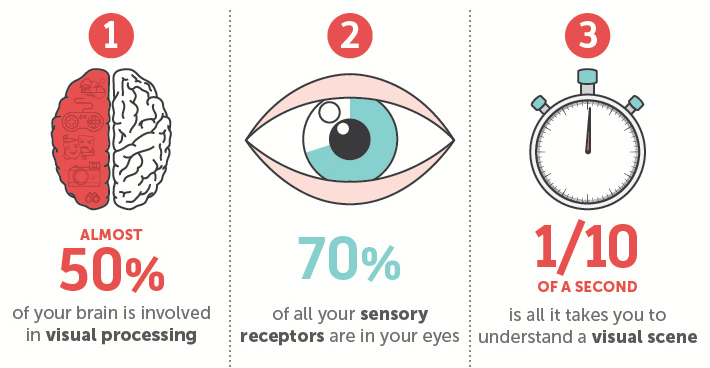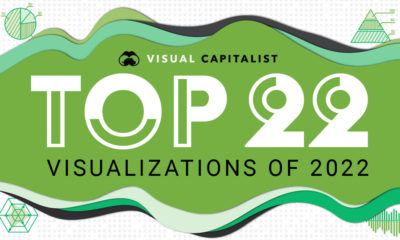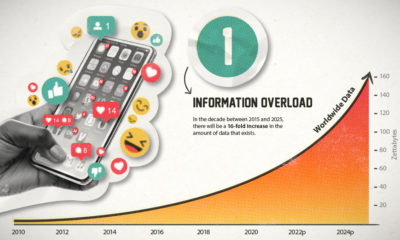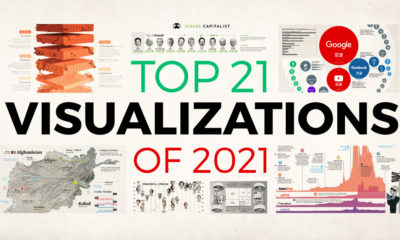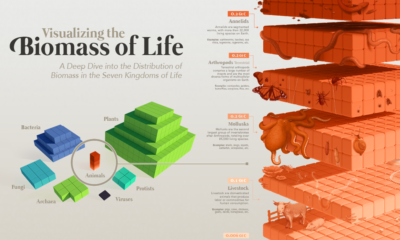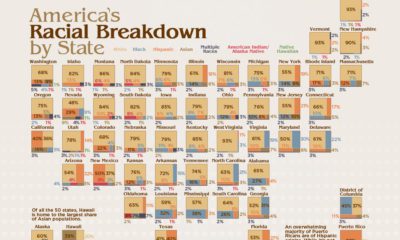It’s not by random chance. In fact, there’s overwhelming scientific evidence that explains why people are attracted to visuals such as infographics, data visualizations, and charts. In essence? The majority of people are visual learners, and carefully thought-out and well-researched visuals can explain something more effectively than text ever could. It’s why we, at Visual Capitalist, aim to continue providing insights on business and investing by creating and curating the best data-driven visual media on the web.
13 Scientific Reasons On Why You Crave Infographics
Without further ado, the 13 data-driven reasons behind the power of infographics and visual content.
The above infographic comes to us from NeoMam Studios and it takes a data-driven approach to explaining why people constantly crave infographics. Here’s a summary of the 13 reasons: Human beings are visually wired:
- Almost 50% of your brain is involved in visual processing. 2. 70% of all your sensory receptors are in your eyes. 3. 1/10 of a second is all it takes you to understand a visual scene. 4. It takes us only 150 milliseconds to process a symbol, and 100 milliseconds to attach a meaning to it. We need to understand things faster because we suffer from information overload:
- We receive 5x as much information in 2014 as in 1986. 6. We consume 34 gigabytes of information on an average day, just outside of work. 7. Only 28% of words on a web page are actually read on an average visit. Infographics help us get information more quickly because:
- Researchers have found that color visuals increase willingness to read by 80%. 9. For medicine labels, a study found that 70% understand the labels with text only, while 95% understand with text and pictures. 10. People do 323% better following directions with text and illustrations in comparison to just text. Infographics are more persuasive:
- A study conducted at the Wharton School of Business found that 50% of the audience was persuaded by purely verbal presentation, while 67% were persuaded by a verbal presentation accompanied by visuals. 12. Adding pictures of brain scans and mentioning cognitive neuroscience make people more inclined to believe what they are reading. 13. People remember 80% of what they see and do, in comparison to 10% of what they hear, or 20% of what they read.
on Even while political regimes across these countries have changed over time, they’ve largely followed a few different types of governance. Today, every country can ultimately be classified into just nine broad forms of government systems. This map by Truman Du uses information from Wikipedia to map the government systems that rule the world today.
Countries By Type of Government
It’s important to note that this map charts government systems according to each country’s legal framework. Many countries have constitutions stating their de jure or legally recognized system of government, but their de facto or realized form of governance may be quite different. Here is a list of the stated government system of UN member states and observers as of January 2023: Let’s take a closer look at some of these systems.
Monarchies
Brought back into the spotlight after the death of Queen Elizabeth II of England in September 2022, this form of government has a single ruler. They carry titles from king and queen to sultan or emperor, and their government systems can be further divided into three modern types: constitutional, semi-constitutional, and absolute. A constitutional monarchy sees the monarch act as head of state within the parameters of a constitution, giving them little to no real power. For example, King Charles III is the head of 15 Commonwealth nations including Canada and Australia. However, each has their own head of government. On the other hand, a semi-constitutional monarchy lets the monarch or ruling royal family retain substantial political powers, as is the case in Jordan and Morocco. However, their monarchs still rule the country according to a democratic constitution and in concert with other institutions. Finally, an absolute monarchy is most like the monarchies of old, where the ruler has full power over governance, with modern examples including Saudi Arabia and Vatican City.
Republics
Unlike monarchies, the people hold the power in a republic government system, directly electing representatives to form government. Again, there are multiple types of modern republic governments: presidential, semi-presidential, and parliamentary. The presidential republic could be considered a direct progression from monarchies. This system has a strong and independent chief executive with extensive powers when it comes to domestic affairs and foreign policy. An example of this is the United States, where the President is both the head of state and the head of government. In a semi-presidential republic, the president is the head of state and has some executive powers that are independent of the legislature. However, the prime minister (or chancellor or equivalent title) is the head of government, responsible to the legislature along with the cabinet. Russia is a classic example of this type of government. The last type of republic system is parliamentary. In this system, the president is a figurehead, while the head of government holds real power and is validated by and accountable to the parliament. This type of system can be seen in Germany, Italy, and India and is akin to constitutional monarchies. It’s also important to point out that some parliamentary republic systems operate slightly differently. For example in South Africa, the president is both the head of state and government, but is elected directly by the legislature. This leaves them (and their ministries) potentially subject to parliamentary confidence.
One-Party State
Many of the systems above involve multiple political parties vying to rule and govern their respective countries. In a one-party state, also called a single-party state or single-party system, only one political party has the right to form government. All other political parties are either outlawed or only allowed limited participation in elections. In this system, a country’s head of state and head of government can be executive or ceremonial but political power is constitutionally linked to a single political movement. China is the most well-known example of this government system, with the General Secretary of the Communist Party of China ruling as the de facto leader since 1989.
Provisional
The final form of government is a provisional government formed as an interim or transitional government. In this system, an emergency governmental body is created to manage political transitions after the collapse of a government, or when a new state is formed. Often these evolve into fully constitutionalized systems, but sometimes they hold power for longer than expected. Some examples of countries that are considered provisional include Libya, Burkina Faso, and Chad.

